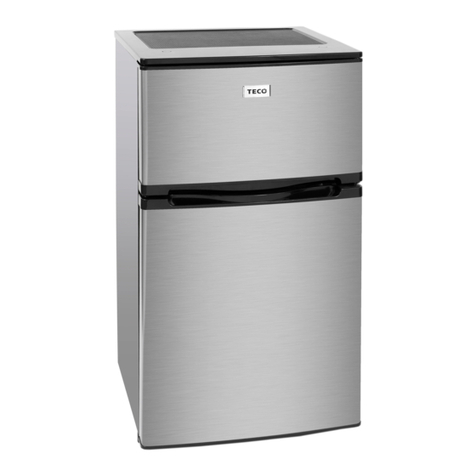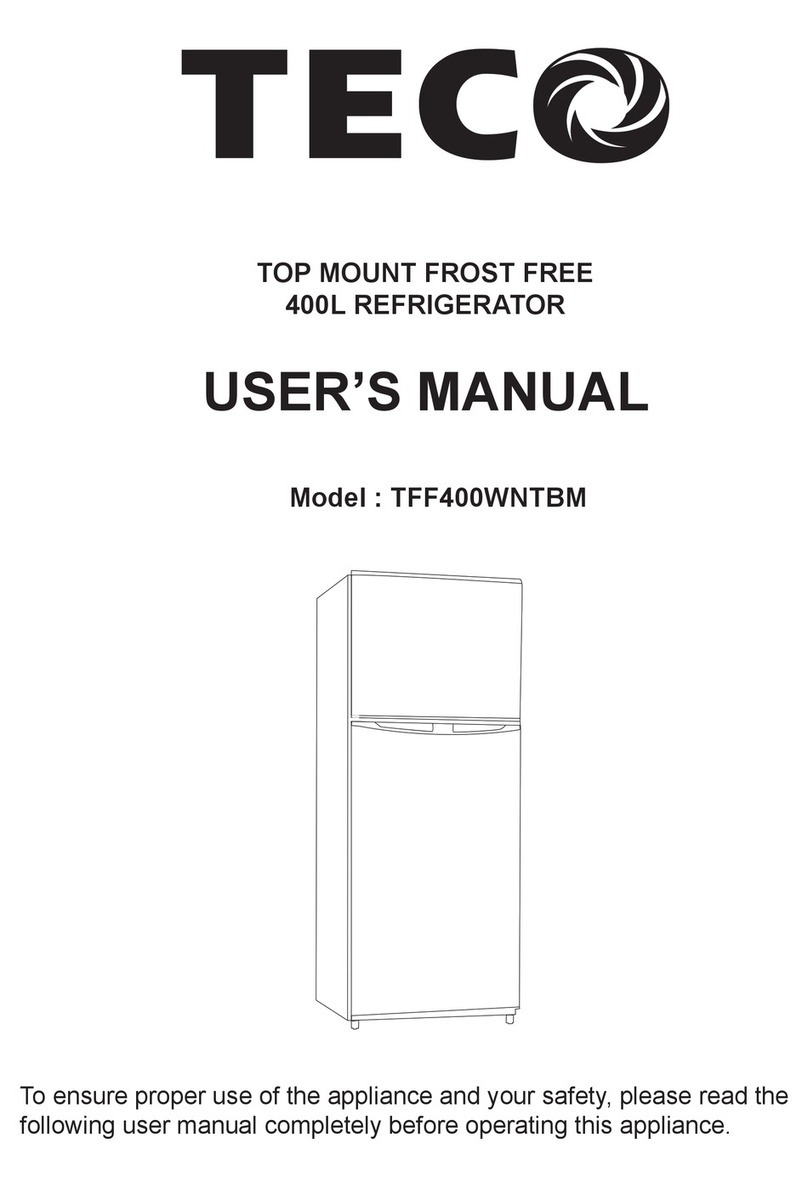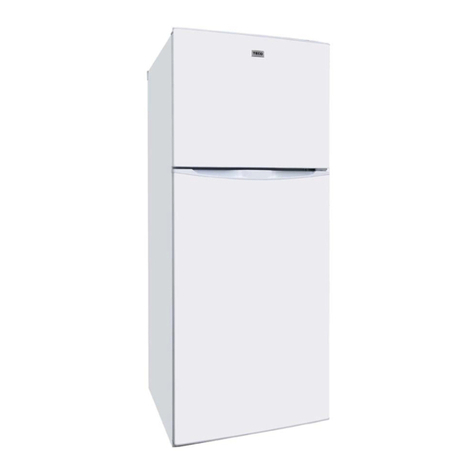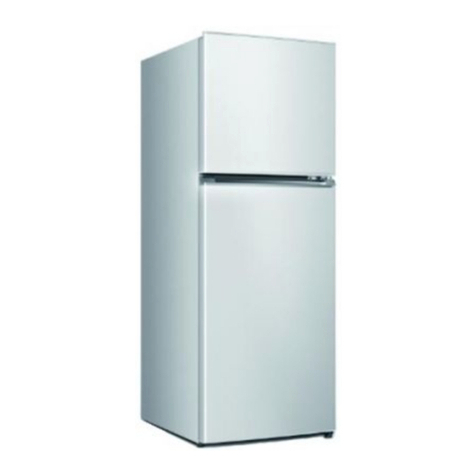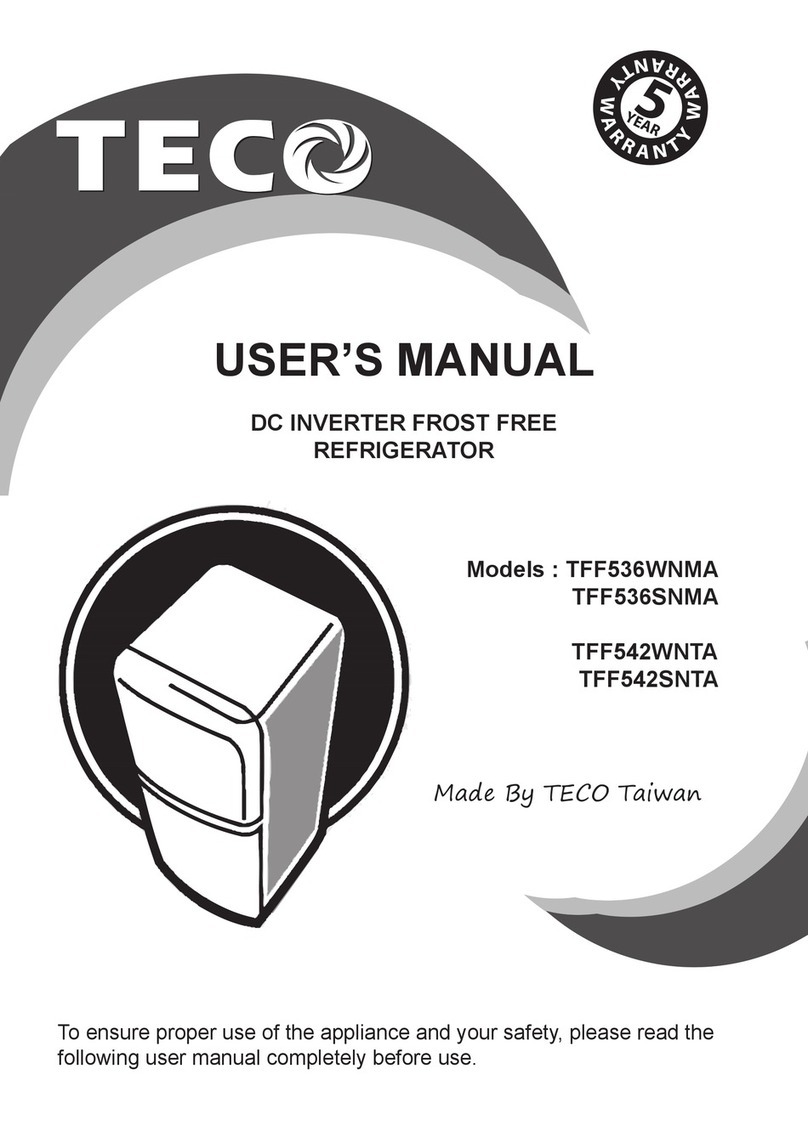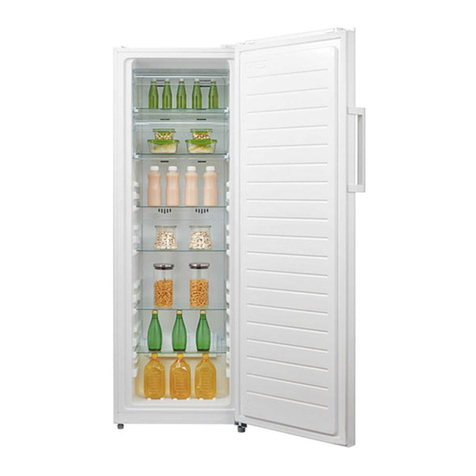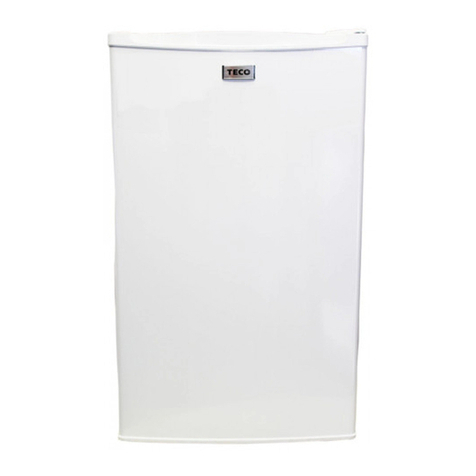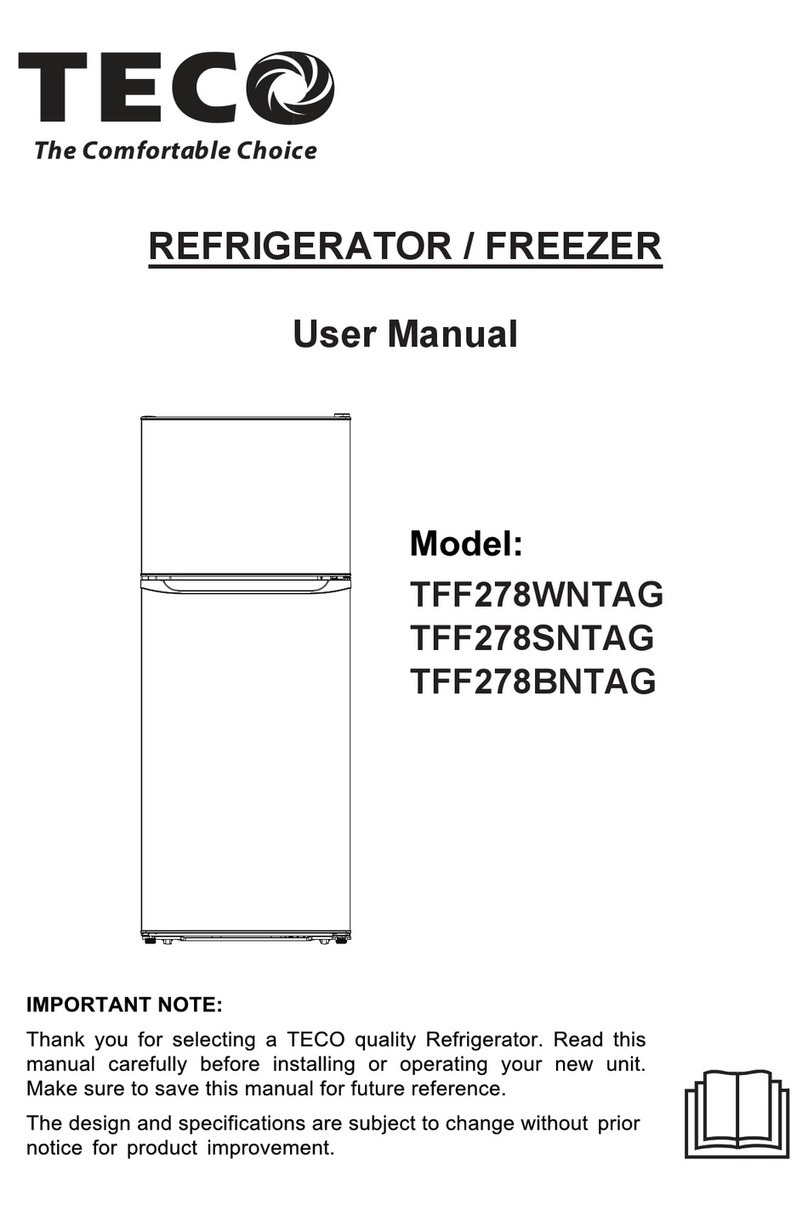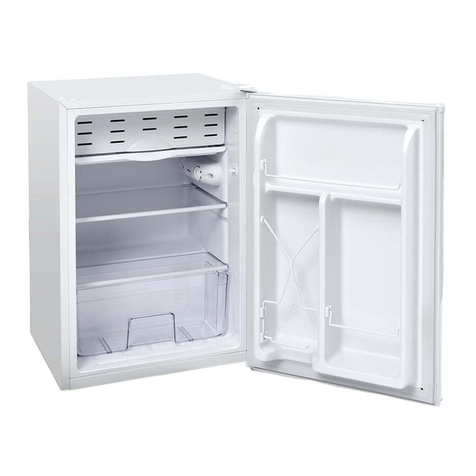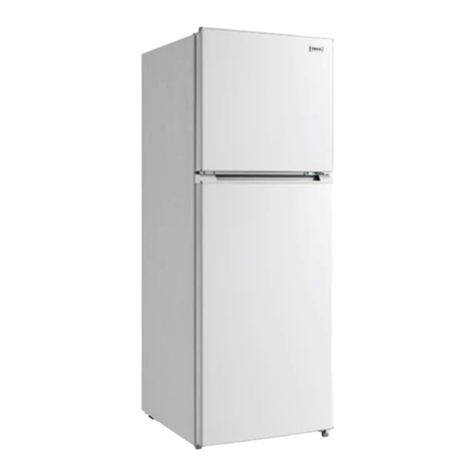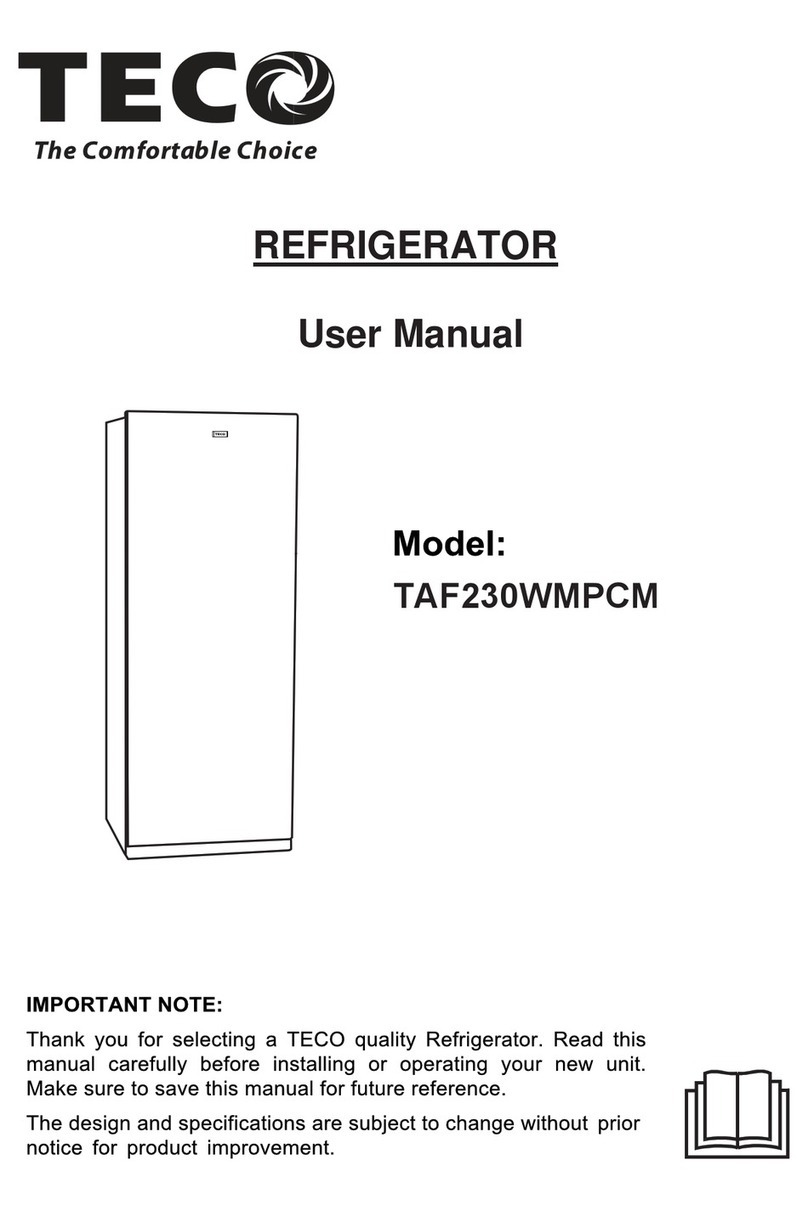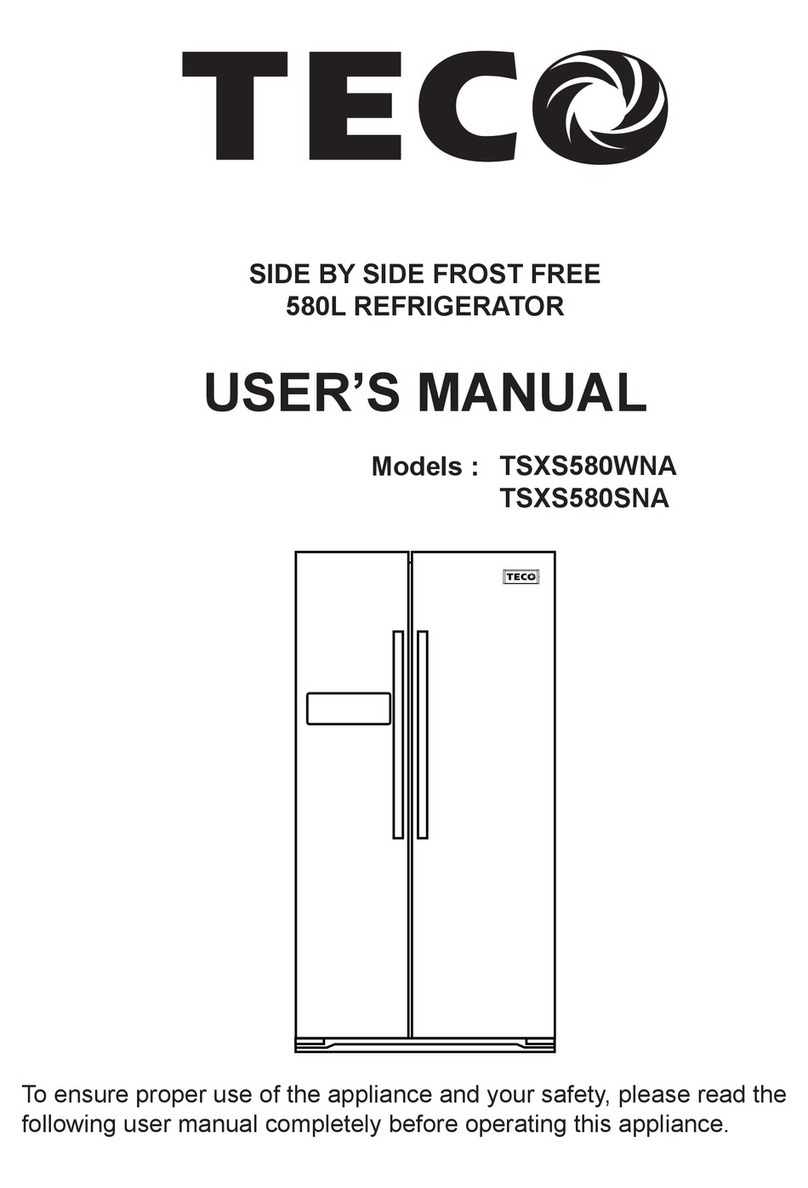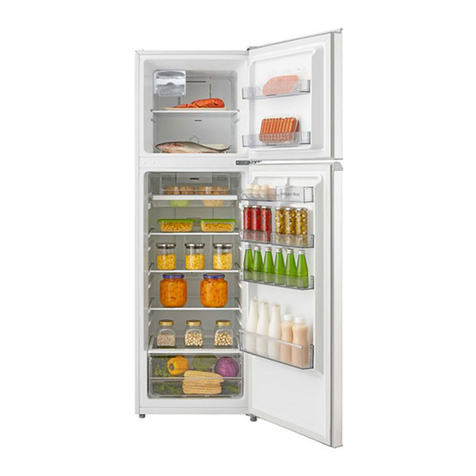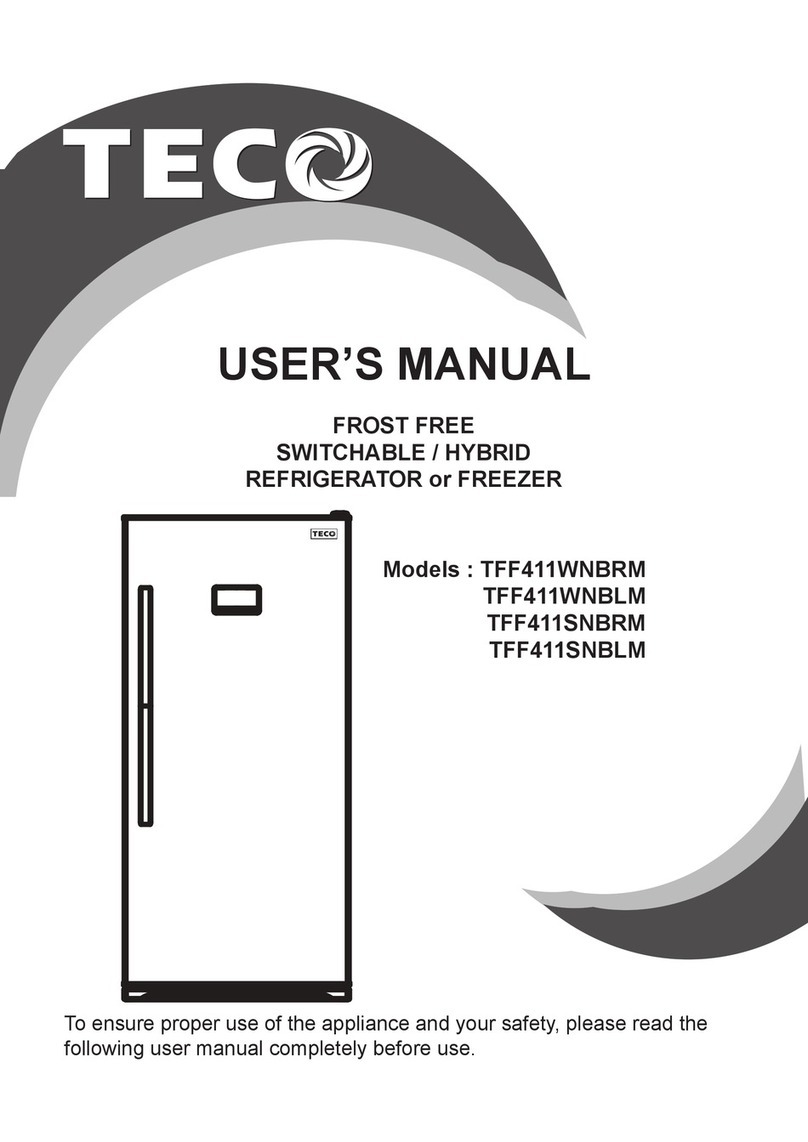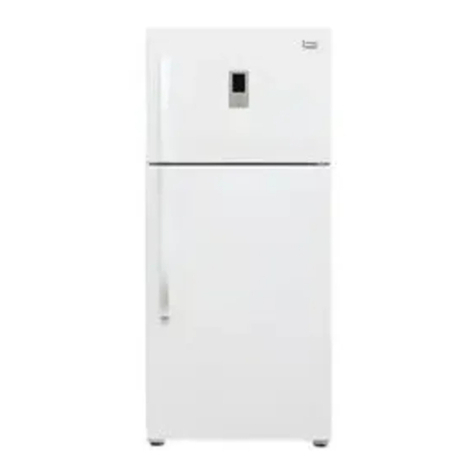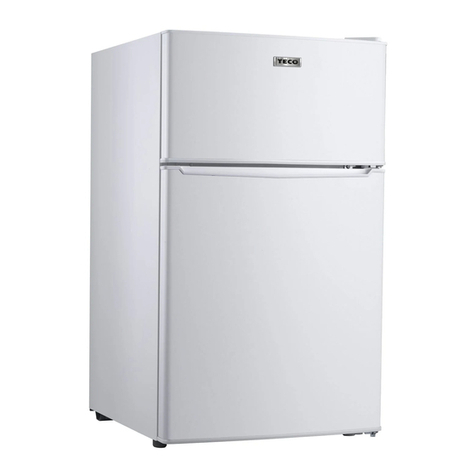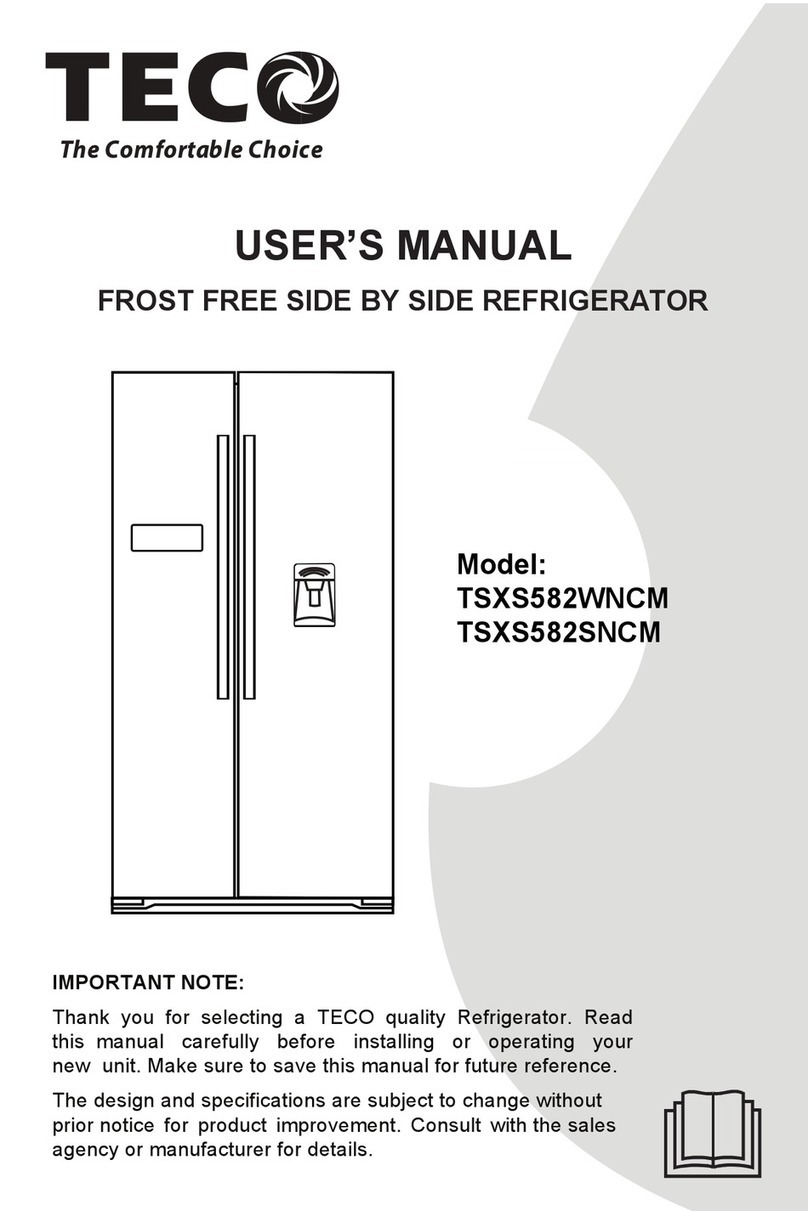
2
•The refrigerator is designed to operate on a single phase power
supply within a voltage range of 220~240V/50Hz.
•The refrigeration system contains refrigerant. Do not allow any
sharp objects to come in contact with the refrigerant system to
avoid damage the refrigerant circuit.
•This product is for indoor use only.
•Do not place electrical items or cooking equipment nearby. Keep away
from substances which could cause ignition and good
ventilation shall be always maintained.
•Do not place objects on top of the appliance which are magnetic,
heavy or filled with water.
•If the supply cord is damaged, it must be replaced by authorised TECO
service personal, service agent or similarly qualified persons in order to
avoid a hazard.
•Do not store flammable, explosive, volatile and highly corrosive
materials in the refrigerator. Containers with flammable gases or
liquids can leak at low temperature. There is a risk of explosion or fire.
•Do not splash water on the appliance. It may cause malfunction or electric
shock.
•Always switch off and unplug appliance before cleaning.
•Keep ventilation openings, in the appliance enclosure or in the built-in
structure, clear of obstruction.
•Do not use mechanical devices or other means to accelerate the
defrosting process, other than those recommended by the manufacturer.
•Do not use electrical appliances inside the food storage compartments
of the appliance.
•For appliances which use flammable insulation blowing gases, Please
keep the products away from the fire or similar glowing substance.
•This appliance is intended to be used in household and similar
applications such as:
ostaff kitchen areas in shops, offices and other working
environments;
ofarm houses and by clients in hotels, motels and other
residential type environments;
obed and breakfast type environments;
ocatering and similar non-retail applications.
•This appliance is not intended for use by persons
(including children) with reduced physical, sensory or
mental capabilities, or lack of experience and
knowledge, unless they have been given supervision or
instruction concerning use of the appliance by a person
responsible for their safety.
•Young children should be supervised to ensure that they
do not play with the appliance.
•Packing (e.g. wraps, polystyrene etc.) can be dangerous
for children. There is a risk of suffocation. Keep
packaging materials away from children.
